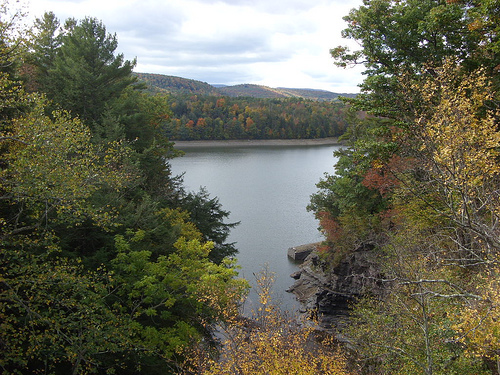The famously delicious water that comes out of New York City taps originates in the Catskill Mountains, up near Albany. It flows through a series of tunnels and aqueducts until it reaches the two massive tunnels that bring it into the city. Those tunnels, built in 1917 and 1936, were recently joined by a still-in-progress third, which has been under construction for more than 40 years.
The city’s water system will also soon be getting another upgrade: ultraviolet radiation.
The Delaware–Catskill watersheds, located 160 kilometers north of the metropolis, have historically not required filtration or multiple methods of disinfection. More stringent U.S. Environmental Protection Agency (EPA) regulations in recent years and increased development around these bodies of water over the past decade, however, have prompted the city to add more protection against potentially disease-causing microorganisms.
The new, $1.6-billion Catskill–Delaware Ultraviolet Disinfection Facility — built some 50 kilometers north of Manhattan on 62 hectares in the towns of Mount Pleasant and Greenburgh in Westchester County, N.Y. — is scheduled to go live by October 29. As water flows through each of its 151-million-liter disinfection units, the UV light will alter the DNA of cryptosporidium, giardia and other waterborne pathogens, rendering them unable to replicate. Blooms of these microorganisms can cause nausea, cramps, diarrhea and even more serious maladies.
The UV radiation will have no impact on the taste of the water, nor is it in any way dangerous to humans.
In fact, it is meant to protect against the negative impacts that humans are otherwise having on the water. The new facility — the largest of its kind in the world — is needed in part because of land-use changes near the city’s water sources.
Although adenovirus is not typically found in surface water repositories, New York’s watersheds are not entirely free of risk because of the growing population and increased development in those areas, says Mark Sobsey, University of North Carolina at Chapel Hill professor of environmental sciences and engineering and director of the school’s Environmental Microbiology Laboratory. “We have to assume that there is some risk of adenoviruses getting into these water sources from human fecal contamination, such as septic tank effluents that may discharge into some waters and eventually enter the reservoirs,” he adds.
If you’re interested in a pre-UV taste test, you can buy bottled NYC tap water online. Please note: That website makes no mention of any risk of “human fecal contamination.” Caveat emptor.

Raw, unzapped NYC water in the Schoharie Reservoir. (Photo by Dougtone.)




